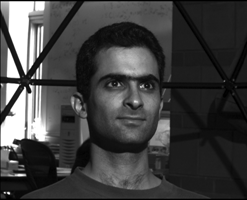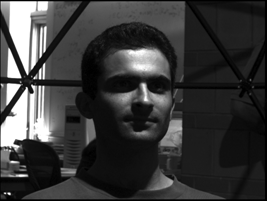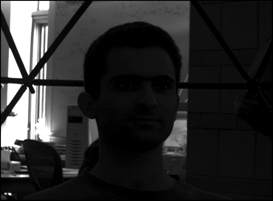Research Interests at MCL
Multidisciplinary Studies at MCL can
be categorized as follows:
In
EM/Plasma aspect: Microwave/Plasma Physics, Photonic Crystals, Compact
Millimeter-wave/THz sources, and FEM and FDTD PIC simulations.
In
QM aspect: Nano-materials, surface emission physics,
quantum transport in low-dimensional systems, and ab initio calculations of material science.†
In
EM coupled with QM aspect: Nano-optics, surface plasmons, and plasma material surface interaction.
In
HPC aspect: Switchless HPC cluster, GPU, Genome SNP Analysis, Artificial
Intelligence (AI), and codes for numerical simulations.†
Long-term Research Objectives are
listed below:
1.
Extending
Research and Development using high-performance computing including ab initio calculations of materials and
EM/Plasmas particle-in-cell simulations.
2.
Electrical
and optical properties of quantum systems in photonic crystals/Metamaterials.
3.
Electron
emission mechanisms and surface excitations.
4.
Design
and development of compact millimeter wave, THz wave, and x-ray sources.
5.
Interdisciplinary
research on modeling of complex systems such as plasma/surface interactions and
physics at edges.
6.
New
physics and applications that benefit human being, society, and nature such as
thermal energy convertors, new energy sources, and high efficiency devices.
Continuing Research Topics in Vacuum
Electronic Devices
1. High efficiency
field emission based magnetrons for industrial heating and wireless power
transmission, injection-locked magnetrons for powering future Linear
Accelerators (Linac), and novel High Power Microwave
(HPM) sources.

Figure 1. Triode
configuration of the A6 relativistic magnetron employing a field emission
cathode.

 †
†
Figure 2. Rising-sun magnetrons employing a
field emission cathode designed and developed using accurate and efficient
CFDTD PIC modeling exhibit a lot of advantages compared to conventional
strapped magnetron employing a thermionic cathode.
2. High power and high
efficiency klystrons employing multistage depressed collectors being able to
recover waste energy of spent beams for replacing existing Linac
klystrons in use.

†††† Figure
3. Electron particle distribution in the
five-stage collector of the compact S-band TWT colored with electron kinetic
energy from the 3D CFDTD simulations.
†
3.
Novel
Traveling Wave Tubes† for Space
Applications
†

Figure
4. Electron-beam transmission along the
68-period ladder SWS for an input power of (a) 1, (b) 10, and (c) 100 W,
predicted using PIC.
4. Gyrotron simulations---Low
frequency oscillations (LFOs), Cavity Interaction (CI), and After Cavity
Interaction (ACI).
††††††††††††††††††††††††††††††††††††††††††

Figure
5. Phase space of electrons in the Magnetron
Injection Gun of the MIT Gyrotron using 3D PIC simulations.
 †††
††† 

Figure
6. 3-D VSim gyrotron model including a downtaper,
an interaction cavity, an uptaper, and an homogeneous waveguide section for accommodating a port
boundary condition. 3-D CFDTD PIC simulation results of the MIT gyrotron:† (a) output
power vs time, (b) FFT of Bx
showing a resonant frequency at 110 GHz, and (c) the time-frequency plot
showing the time evolution of mode competition.
5. High power and high
efficiency MEMS based or 3D Printing based THz devices ---patent in preparation.

Figure
7. Power output of EM sources available
showing THz gaps.
6. Some microwave
components for industrial applications.
 ††††††††††
†††††††††† 
Figure
8. Schematic structure of the MPECVD system
and FEM modeling of EM Plasma discharge and interaction



Figure
9. Left: (a) 3-D view of 915 MHz circulator
design and (b) The ferrite and metal stage geometry configuration, Middle:
Comparison of different ferrite materialsí (a) S11 parameter and (b) S31
parameter. Right: (a) Top view and (b) Side view from port 2 of electric field
norm (V/m) for the compact model of the half height circulator.††
Energy Related Research---Renewable
Energy Sources and Energy Converters or Storages
1. High Efficiency
Thermal Energy Converter (HETEC)
††††††††††
 †
†
Figure 10. Schematic diagrams of a thermionic
energy converter with an external load
2.
Plasmonic-Based Photovoltaics---High Efficiency Thin Film Solar Cells
|
|
|
Figure 11 (a) Scattering electric field
of randomly distributed silver nano-particles and
(b) FEM meshes
Computational
Material Research---First Principles Calculations
1.
Ab initio calculations based
on Density Functional Theory.

Figure
12. VASP 3D model of a tungsten substrate
(left) with one layer of barium absorbed (right).
Figure
13. Left: (a) Crystal structure of Fe3O4, (b)
the black balls denote oxygen atoms and red balls denote A-site (tetrahedral)
iron atoms, and (c) the blue balls denote B-site (octahedral) iron atoms.
Right: (a) Effective work functions (F)
and (b) local work function variation (Δφ)
of the magnetite (100) surface A layer under an external electric field from
0.0 (V/Ň) to 0.3 (V/Ň), (c) charge density and (d) local work function at an
electric field of 0.2 (V/Ň).
2.
Meta-Materials
and Photonics Crystals (PCs)---3D Printing

Figure 14. Band Structure of† 3D Photonic Crystals using FEM simulations compared with K. Sakoda, Optical Properties of Photonic Crystals, 1st ed. (Springer, 2001)
 †††††††
††††††† 
Figure
15. Left: Schematics of omnidirectional
light propagation in 2D PCs for (a) a triangular lattice and (b) a square
lattice with kz = k ∑sinθ
(black solid line) and the in-plane light propagation with kz
= 0 (blue dashed line), where θ is the off-plane incident angle. Right:
Comparisons of 3D total PDOS calculated by the FEM (black solid line) and the
PWEM (green open circles) for a 2D PC with a triangular lattice of air
cylinders etched into silicon (εd
= 11.90) at a filling ratio of 67%. The total PDOS is contributed from both the
radiative (red dotted line) and evanescent (blue
dashed line) modes. The PBG calculated by the FEM for the off-plane radiative waves ranges from 0.395(2πc/a) to
0.399(2πc/a) while that for the in-plane case ranges from
0.382(2πc/a) to 0.400(2πc/a).
Artificial
Intelligence---Developing Beta Chinese Chess and Smart Image Recognition
1. Beta Chinese Chess

Figure
16. Schematic of Beta Chinese Chess platform
based on an open source project developed by Google. Chinese Chess is an
ancient game that is deeply embedded in Chinese culture. Millions have played
the game across Asia for the past few centuries and spread to the global in
recent decades. Improving the AI engine to compete Professional Masters and
understanding how human think are the goals. The corresponding algorithms
developed might boost AI advancement.††
2. Smart Image
Recognition





Figure
17. Schematic Face recognition is one of the
artificial intelligence (AI) technologies a widely used today or near future in
different applications such as advanced human-computer interaction, video
surveillance, automatic indexing of images, and video database, etc. We† focus on modification and testing of the
internal parameters in YOLO V3 to improve the face detection system developed
at Hanyang University, Korea for conquering variant
environmental challenges, such as a larger database with more than ten thousands
of images for different human subjects with different poses and illumination
conditions.
©2014 MCL Contact us , All Rights Reserved.


